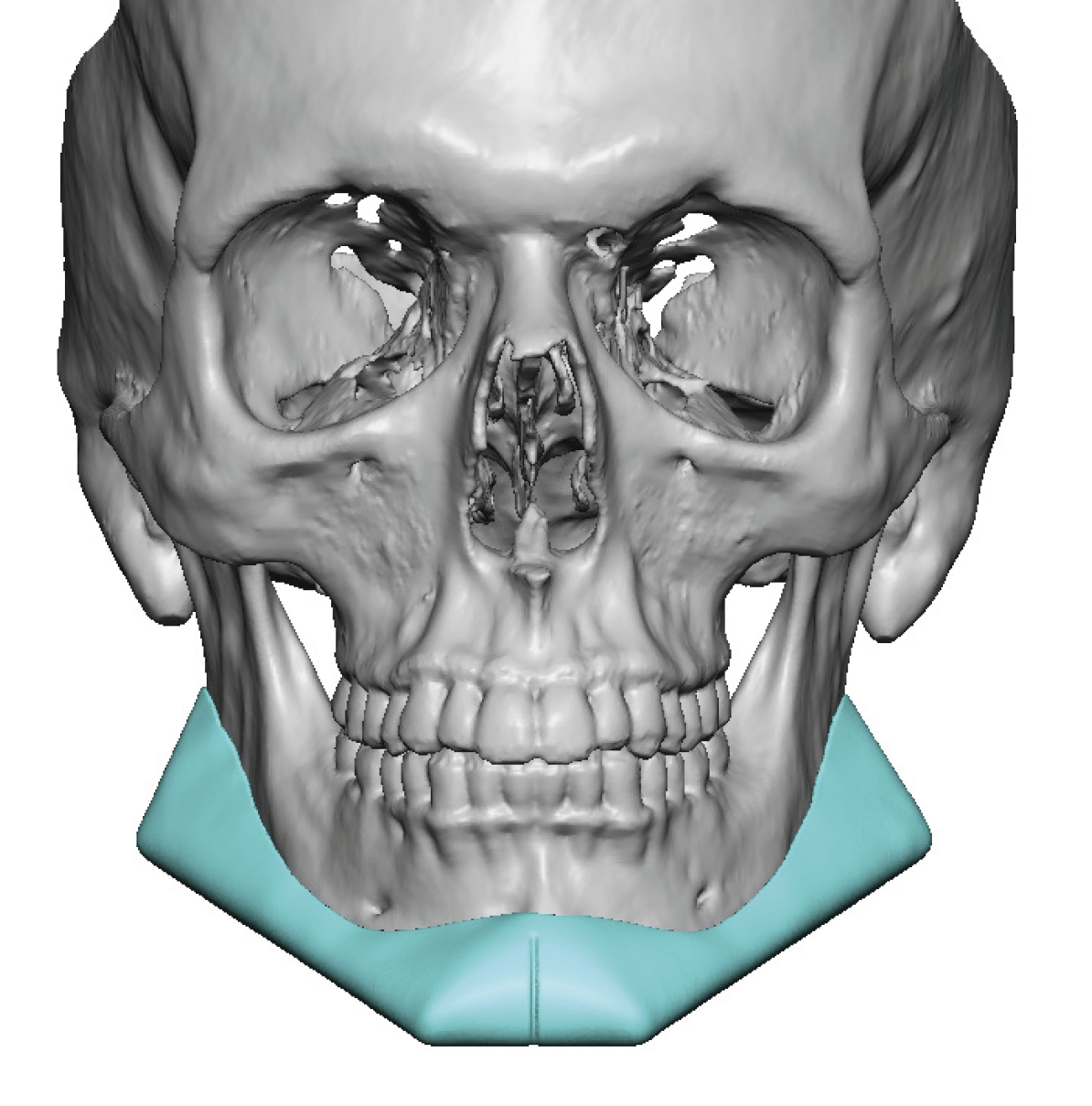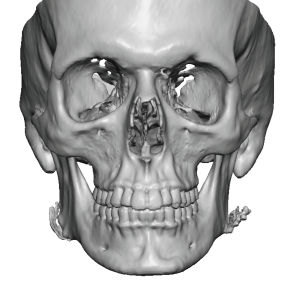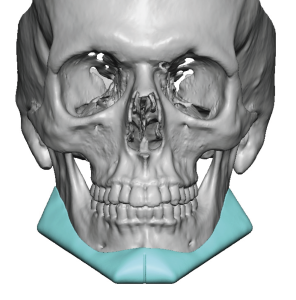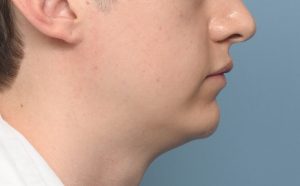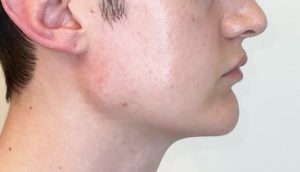Background: One of the most popular and commonly performed custom facial implants is that of the jawline. By surface area it is the largest custom implant design since it covers the entire jawline in a wrap around fashion. In designing these implants they are seven specific dimensional decisions that must be made at its three corners (chin and jaw angles) all of which has significant external aesthetic consequences.
One of the primary benefits of a custom jawline implant design is that all aspects of its shape can be determined beforehand…a huge advantage over off the shelf implants. But seeing an implant design and selecting its numerous dimensions is not an exact science even if it looks like it is. There is no manual, textbook or scientific articles that have ever been written on custom implant designing for aesthetic augmentation purposes. Thus the impact of a design made on the bone with the exact external facial effect remains not completely predictable.
The primary reason implant designs can not be directly correlated with an effect is the soft tissue cover. This soft tissue cover obviously varies in thickness amongst different patients but also differs in thickness along the jawline. The soft tissue thickness is greatest at the jaw angle due to the masseter muscle. It has intermediate thickness over the chin but acting as a solitary projecting point it overcomes some of its thickness. It is usually thinnest between the chin and jaw angles but this is also a featureless and topographically flat part of the jawline.
Case Study: This ‘baby faced’ young male desired a stronger jawline. He had no prior aesthetic facial surgery. To determine his tolerance for jaw augmentation changes computer imaging of his pictures was done, with some back and forth, to determine the type of jaw augmentation he was seeking. By his own description he was not afraid of a stronger result. He had Radiesse injectable filler injections to the jaw angles which was apparent on his 3D CT scan.
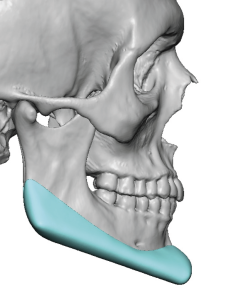


A custom jawline implant design is really an approximation (best guess) as to what can create a result that comes close to the patient’s expectation. But it should not really be a complete guess, it should be based on preoperative imaging using the patient’s pictures to determine their goals. The other design consideration is to factor in the thickness of the overlying soft tissues. In thicker soft tissue patients more accentuated implant designs are needed to overcome the soft tissue thickness. This can make the implant design look exaggerated (peculiar) to many patients.
Case Highlights:
1) In custom jawline implants the external effects is not a direct correlation to that of the design.
2) The three corners of a jawline implant (chin and jaw angles) are where stronger or softer design features are most important.
3 By 6 weeks after surgery most of the resultant features of a custom jawline implant are largely known.
Dr. Barry Eppley
World-Renowned Plastic Surgeon

